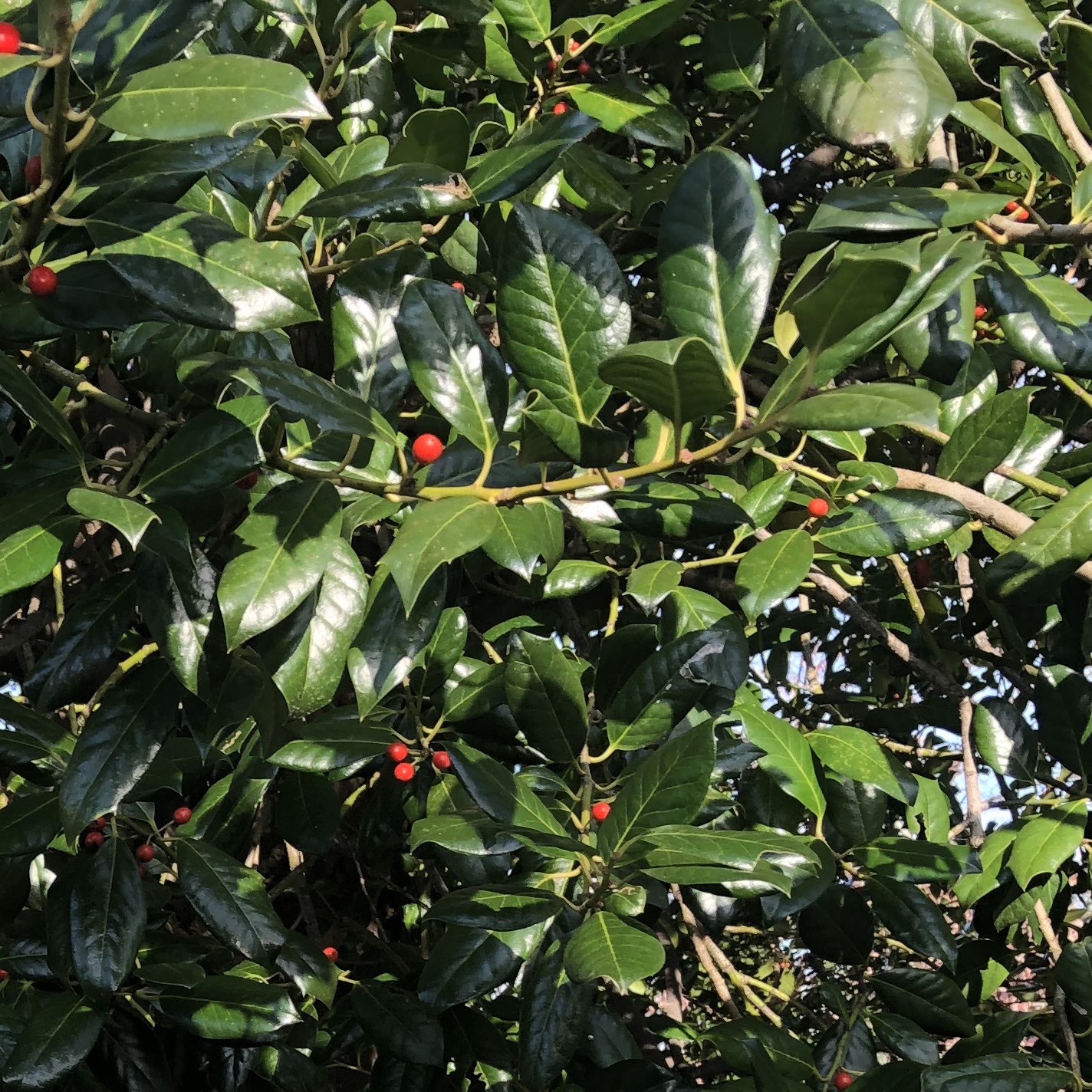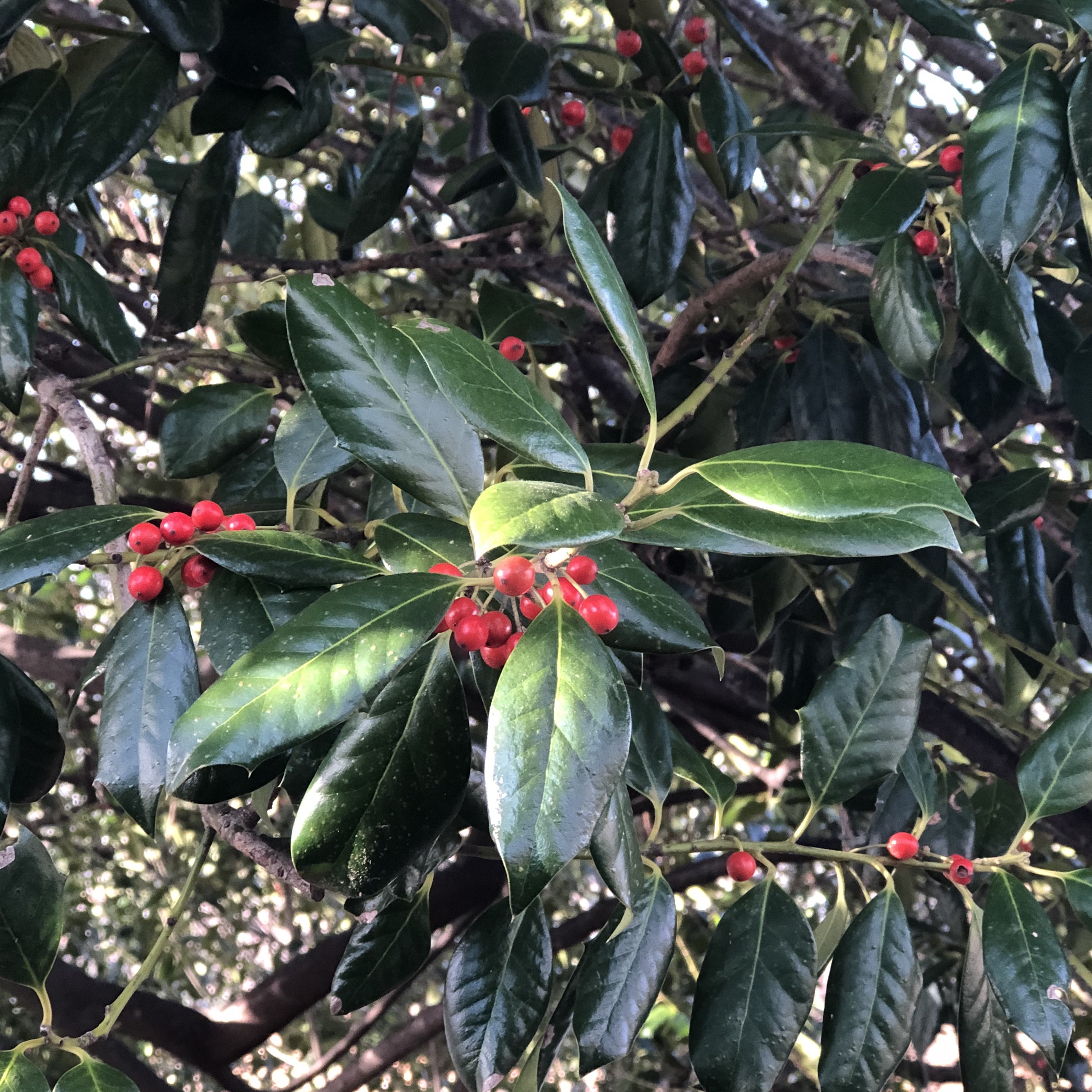If you are looking for an ornamental tree that remains green all year long, look no further. The holly tree could be just what you are looking for. These evergreens, when healthy, produce dense green foliage all year long. In the fall, they produce bright red fruit (berries) that last throughout the winter. What also makes them desirable is they tolerate a variety of soil conditions, although they prefer acidic, well drained soils. These trees are tolerant of shade, but also can thrive in direct sun. Holly trees can be easily shaped for groomed landscapes or hedges.

Holly Leaves


Leaves
Holly tree leaves are thick, don’t bend easily, and feel almost leathery in texture. This makes sense since they are on the tree all year, they have to be durable. Holly leaf edges are sharp with points or smooth. It is possible to find a holly tree with both types of leaf edges. This is called heterophylly. Some scientist theorize that the type of leaf edge produced is a result of predation. Animals don’t like to eat prickly leaves. Nature is just so amazing! Leaves are alternate on the stem.
Scientific Classification
Kingdom Plantae – Plants
Subkingdom Tracheobionta – Vascular plants
Superdivision Spermatophyta – Seed plants
Division Magnoliophyta – Flowering plants
Class Magnoliopsida – Dicotyledons
Subclass Rosidae
Order Celastrales
Family Aquifoliaceae – Holly family
Genus Ilex L. – holly
Species Ilex opaca Aiton – American holly
Species and Varieties
According to the United States Department of Agriculture Natural Resources Conservation Service Plants Database, there are 49 species of holly trees. Not all are found in the United States. Within each species, there are specific varieties. For example, Ilex opaca Alton has two varieties; arenicola (Ashe) Ashe and opaca. This post is talking about general holly characteristics.
Fruit / Berries
The genus for holly trees is dioecious. This means that male flowers are one plant and female flowers are on a different plant. Interestingly, plants must be at least 4 -7 years old to produce flowers. Until a holly flowers, it is impossible to tell the gender of the plant. Fruits emerge on female plants in the fall in the form of the characteristic red berries. Red berries can last all winter, adding variety to the landscape.


Holly Trees in the Wild
Many of the wild holly trees that grow in the forests of Virginia are American Holly Ilex opaca Aiton. Wild holly trees do not naturally have the dense branch patterns that nursery cultivars do, so as a result, it is not always obvious that they are holly trees. Left to grow naturally they reach the upper limits of height for the plant, which is typically 30-40 feet. This photo is from a trail in Great Falls near the Potomac River.
References:
